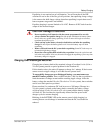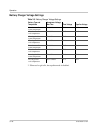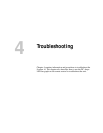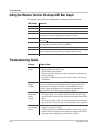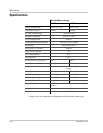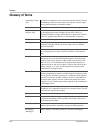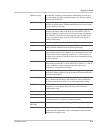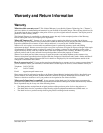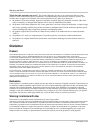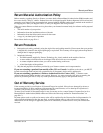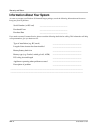
Glossary of Terms
975-0251-01-01 B–3
Equalize Charge A controlled overcharge of the batteries which brings all cells up to
the same voltage potential, extends the battery life, restores capacity
and mixes the electrolyte.
Gel Cell Battery A type of battery that uses a gelled electrolyte solution. These
batteries are sealed and are virtually maintenance free. Not all sealed
batteries are the gel cell type.
Ground The reference potential of a circuit. In automotive use, the result of
attaching one battery cable to the body or frame which is used as a
path for completing a circuit in lieu of a direct wire from a component.
This method is not suitable for connecting the negative cable of the
inverter to ground. Instead, route the cable directly to the negative
terminal of the battery.
LED Light Emitting Diode, used as an indicator light.
Negative Designating or pertaining to electrical potential. The negative terminal
is the point from which electrons flow during discharge.
Ohm A unit for measuring electrical resistance. Ohm's Law Express the
relationship between volt (V), amperes (A) in an electrical circuit with
resistance (R). It can be expressed as follows: V = AR If any two of
the three values are known, the third value can be calculated by using
the above formula.
Ohm’s Law Express the relationship between volt (V), amperes (A) in an electrical
circuit with resistance (R). It can be expressed as follows: V = AR. If
any two of the three values are known, the third value can be
calculated by using the above formula.
Positive Designating or pertaining to electrical potential; opposite of negative.
The positive battery terminal is the point where electrons return to the
battery during discharge.
Power sharing The ability of the charger to reduce its output when the AC power
being consumed by the charger and external AC loads connected to
the output of the inverter are in excess of the input breaker rating.
RCCB Residual Current Circuit Breaker. A protective device that
deenergizes a circuit rapidly when current to ground exceeds a
predetermined value.
Volt The unit of measure for electric potential.
Volt Amps (VA) See Watt.
Watt The unit for measuring electrical power, i.e. the rate of doing work, in
moving electrons by, or against, an electric potential.
Watt-Hour (WATT-
HR, WH)
The unit for measuring electrical energy which equals Watts × Hours.
Wet Cell Battery A type of battery that uses liquid as an electrolyte. This type of battery
requires periodic maintenance such as cleaning the connections and
checking the electrolyte level.



